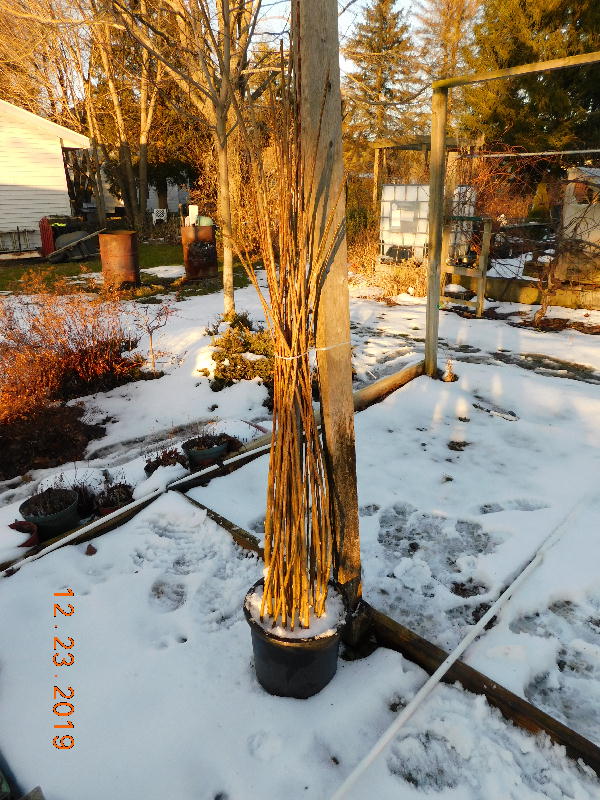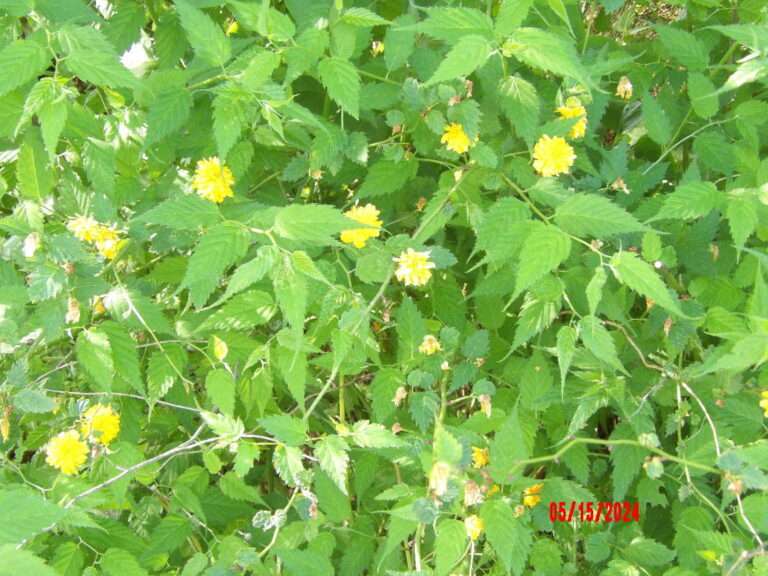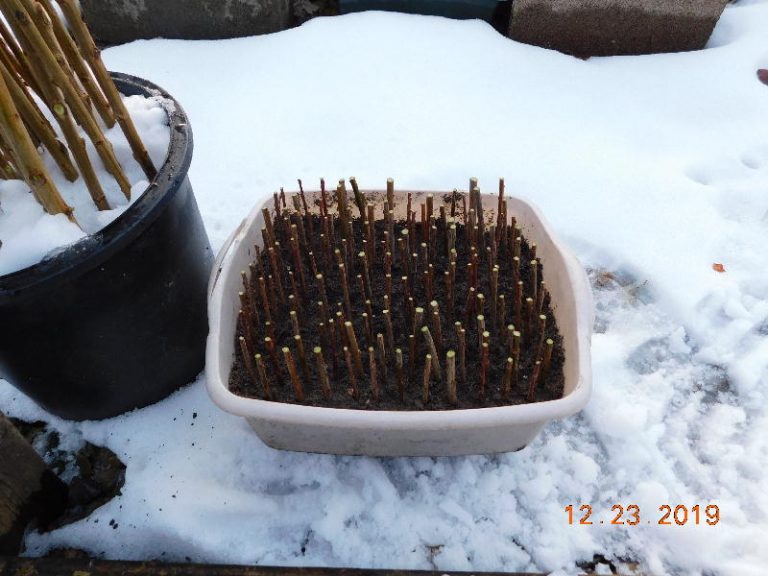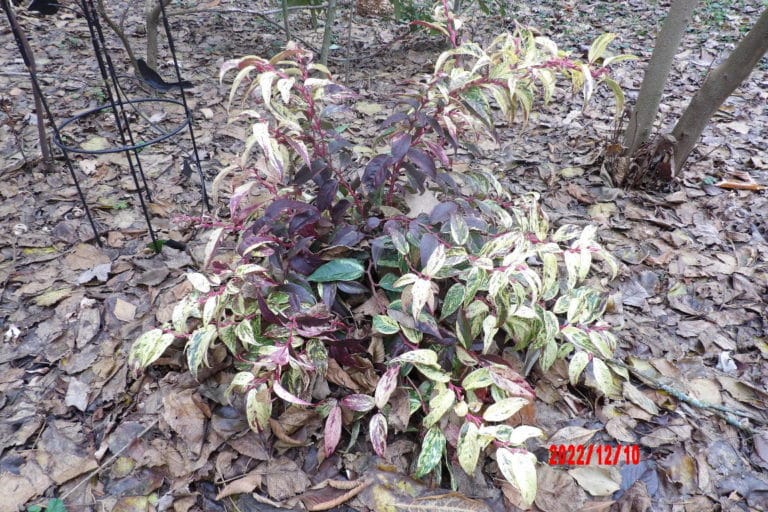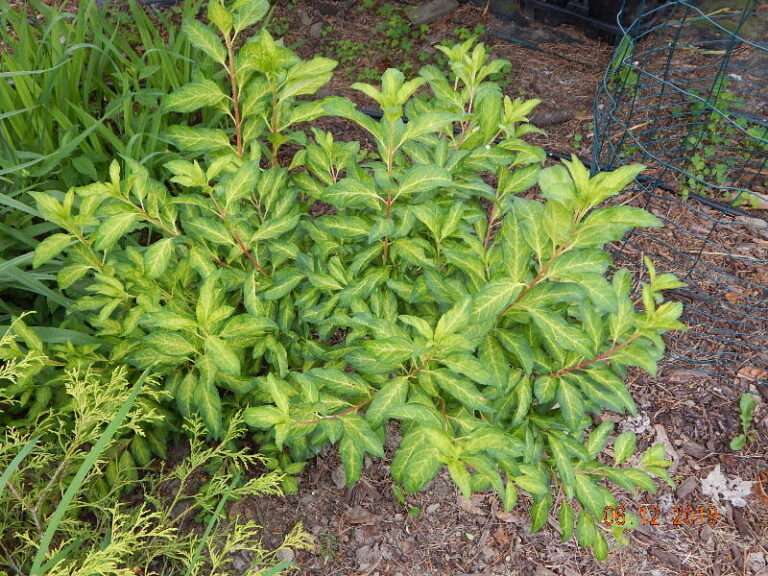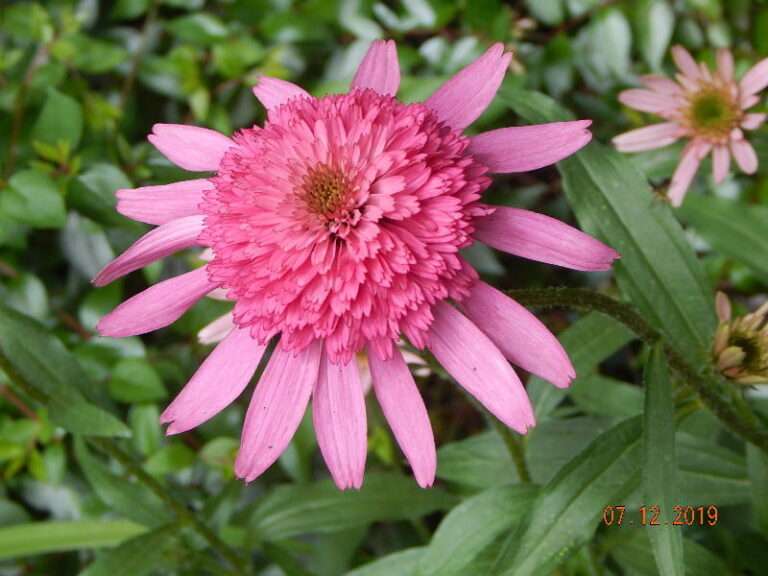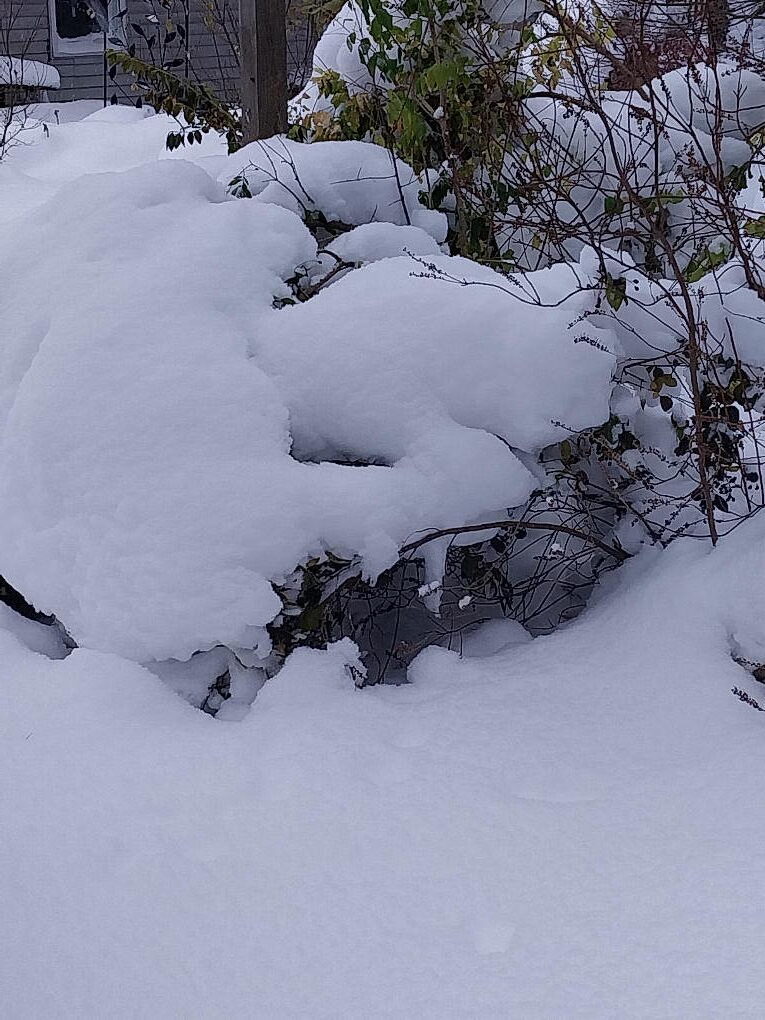Propagating Tree Form Dappled Willow
Propagating Tree Form Dappled Willow
Propagating tree form Dappled Willow. Say what? Dappled Willows are medium to large bushy shrubs. But, they can be done in a tree form as well. Not naturally, but as a man-made oddity.
Most of the ones found in garden centers or stores are actually grafted trees. A tree is grown using another form of straight growing Willow. A cutting or even a small Dappled Willow is then grafted onto that tree.
What you wind up with is a tall, usually about 5 feet tall, trunk with a branchy Dappled Willow growing at the top. A careful examination of the trunk will reveal the graft union. Any growth below that point has to be removed because it will be from the other Willow.
This has its advantages from a commercial standpoint. These trees can be grown and sold faster. It is much easier to create many of them at the same size and shape.
The downside is the issue of growth below the graft union ruining the tree. Sometimes the grafted part, Dappled Willow, in this case, can fail and ruin the tree. The graft union can also be quite noticeable and unsightly.
Lots and lots of pruning
One way to grow them on their own roots is to start with a standard version. Prune all the side branches and only leaving a central trunk. Keep repeating this will eventually give you a taller plant. It would take years to get one big enough to let branch out at the top for a tree form.
A better way
A much better way to accomplish this goal is to start with a long cutting. Fortunately, Dappled Willow is one of the plants that you can get to root with a very long length. Most things will die before they root.
Start with long branches from the current year’s growth. I do them as hardwood cuttings. I have done them as long as 7 feet, but prefer 3 to 5 feet length better. Lower success rate with the 7 footers as well.
Remove any side branches and cut to the length you want. I just cut mine to random lengths. I like a variety of heights and sometimes the tops of taller ones will die off, leaving you with a shorter option.
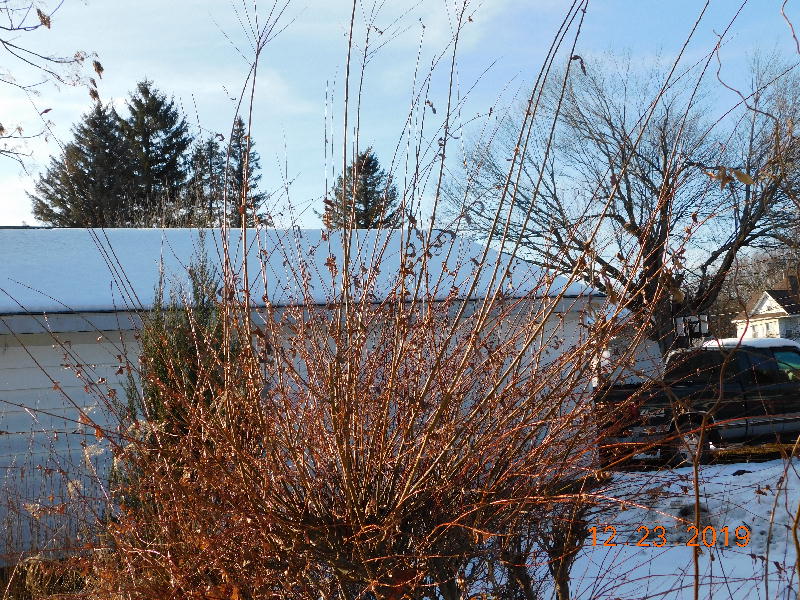
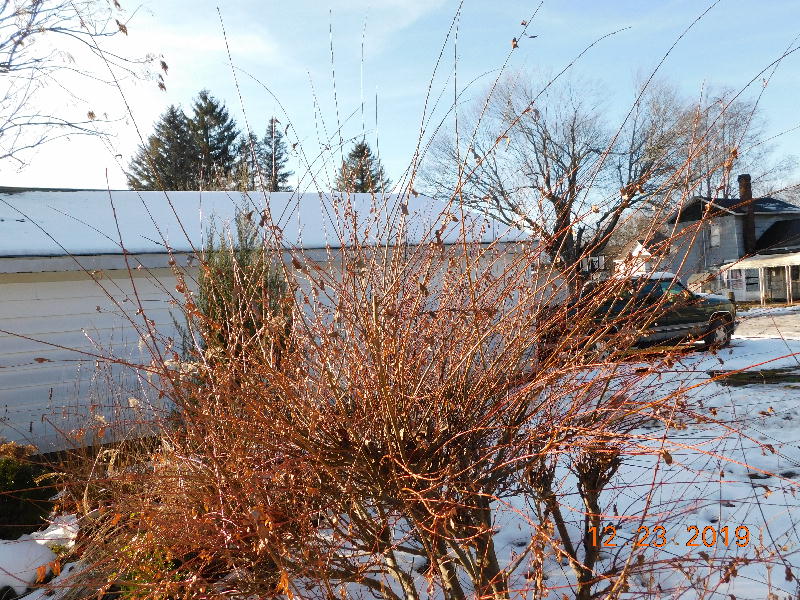
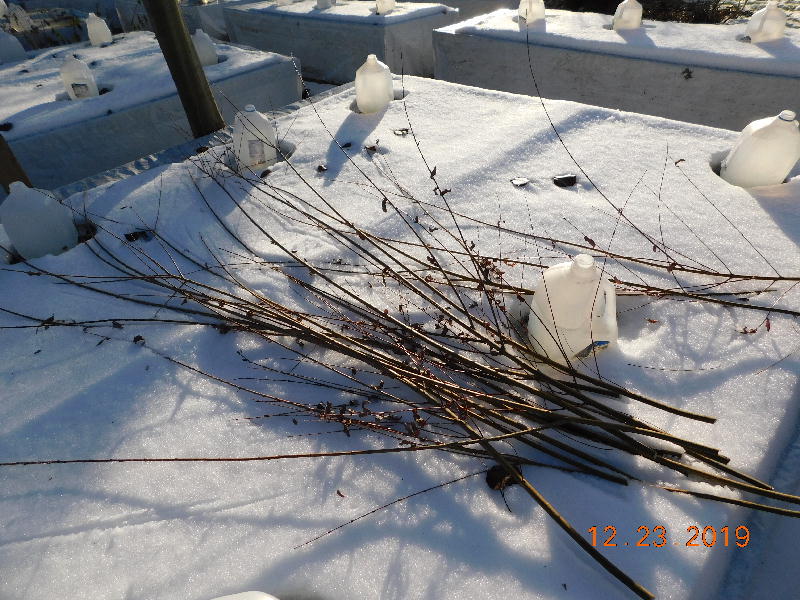
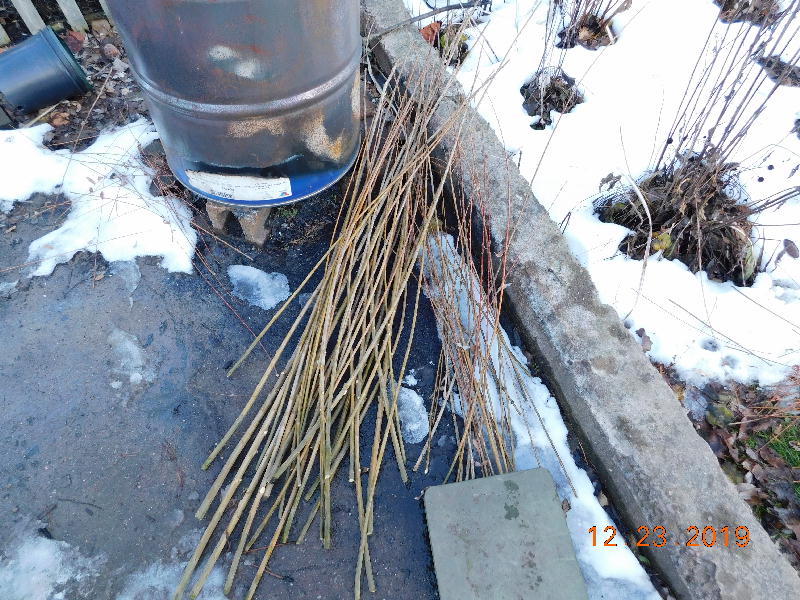
The side branches can be cut up into pieces and stuck as well. These will make several nice Dappled Willow hardwood cuttings. Only the finer branches are not used.
I fill a large pot with coarse sand. These were stuck in a 3-gallon pot filled almost to the top with sand. The large pot helps keep them upright during winter before they root.
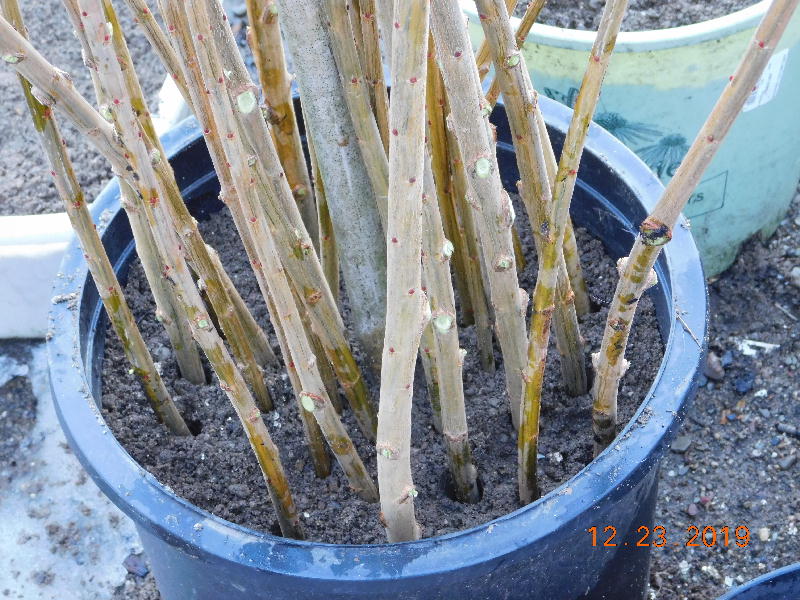
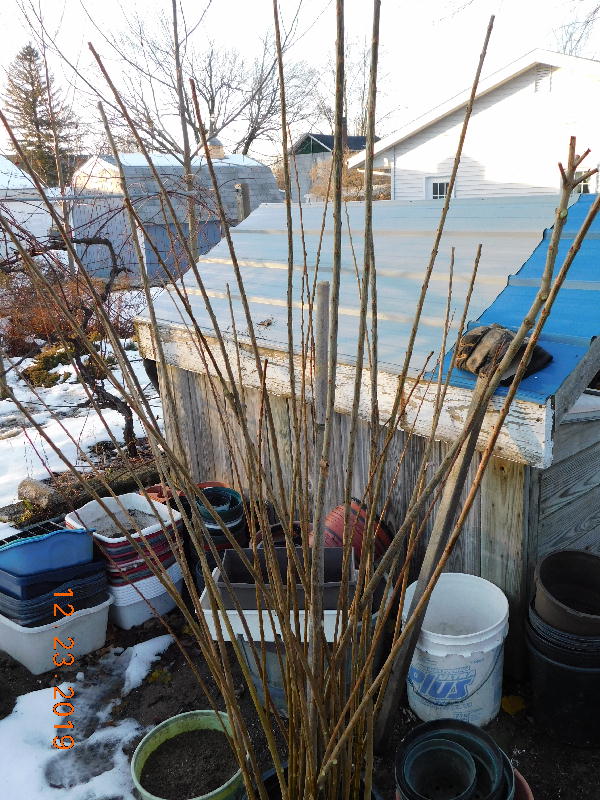
A tall bamboo stake stuck in the center will help stabilize them. Stuck about an inch or so apart, I was able to easily put 35 sticks in this pot. They are about 3 inches deep.
Tied and anchored
I wrap a string around them just below the top of the shortest length. I tie them somewhat tight together with the bamboo in the center. This will help keep them from blowing out of the pot during winter. I then tie that to a pole in the ground. This will keep them from blowing over during a harsh winter storm, hopefully.
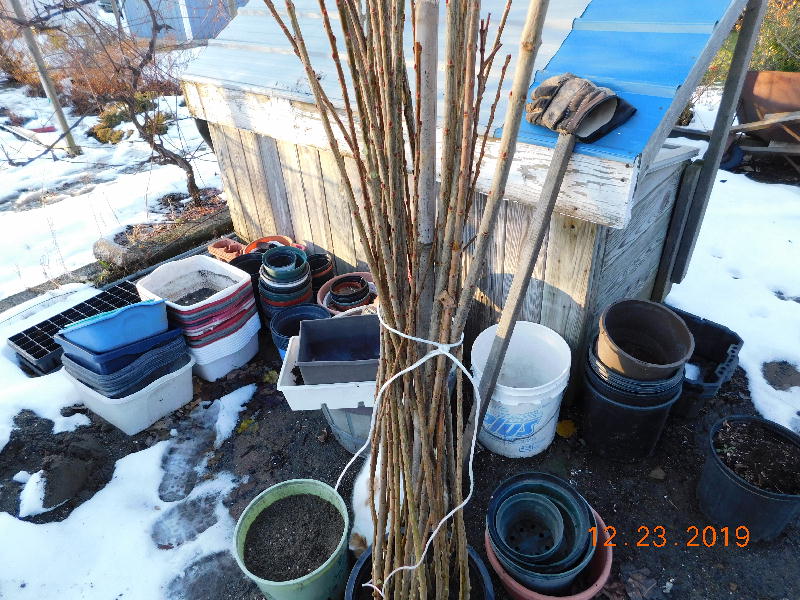
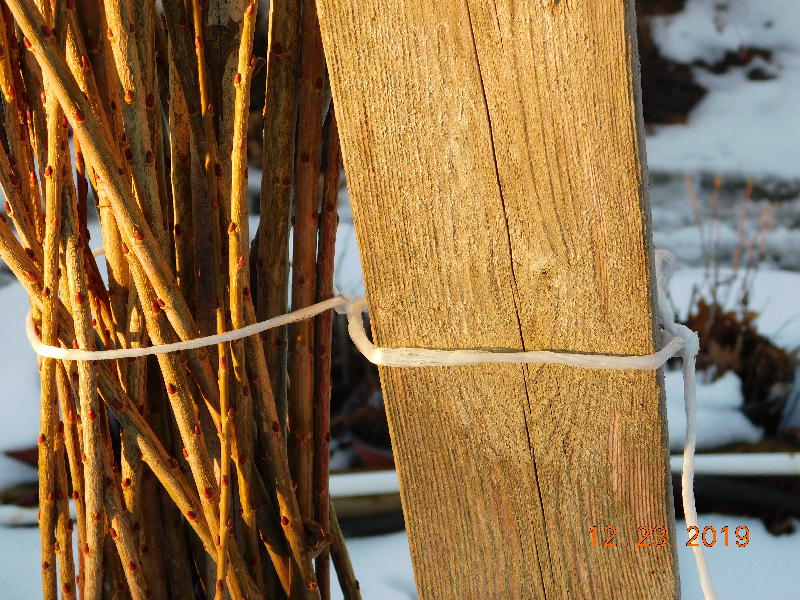
Adding some melting snow to the pot will freeze them in place and water them when it melts. Joining them for the winter is a box of cuttings made from the side branches.
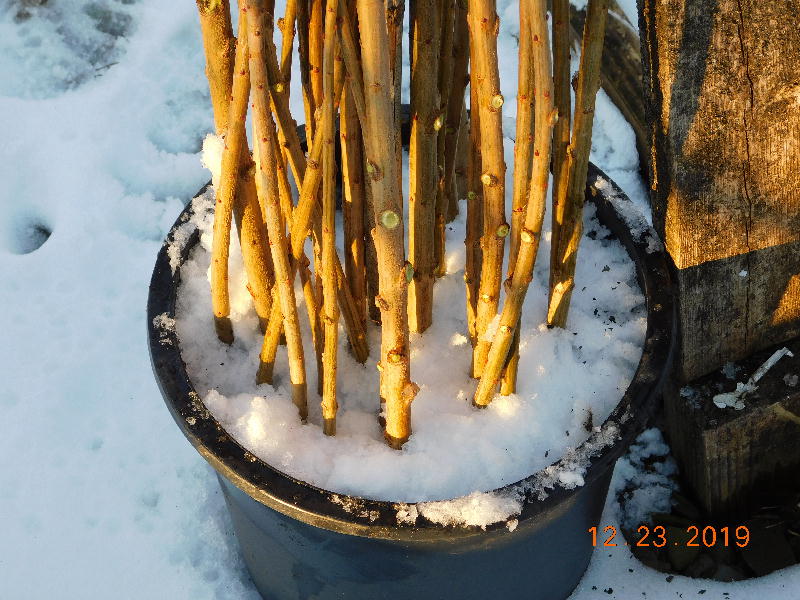

A couple things to watch
A couple of things to keep an eye on when it gets warmer weather. Make sure they get plenty of moisture. If there is no rain, you must keep the sand wet. If it dries out, the sticks will fail. Especially true once leaves start growing and the roots haven’t grown very much.
The other thing, which is probably most important, make sure the cuttings are shaded. Those early spring days with warm sunshine will dry out these poor sticks. I put up a shade cloth over this area.
These long sticks don’t always survive all the way to the tip. If they start showing black or dark brown areas at the tip, just cut it off just below that point. Sometimes a 5 footer will only grow at the bottom. Remove all the dead and grow as a standard form.
The natural form for these is multi-branched. They will try to grow side branches constantly. These must be removed except for an area near the top. This will be the “tree” top bush.
Removal of the red “fingernails” on the trunk will help keep side growth to a minimum. I scrape these off as I see them. These are the nodes where branches form. It will try to grow new ones every once in a while also.
Keep an eye on the areas where bigger side branches were removed in winter. Make sure they are cut smooth and as flush as possible. These wounds should heal over naturally with minimal scarring.

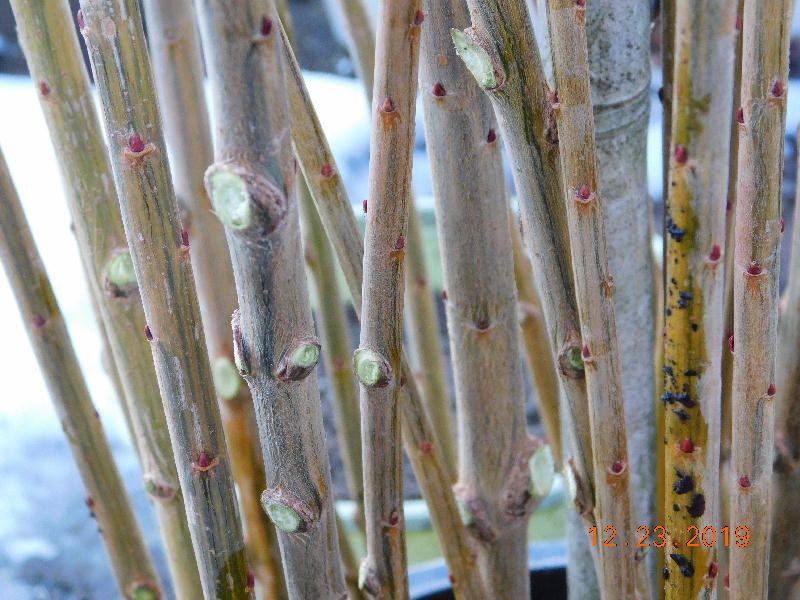
A friend of mine and mentor, Mike McGroarty, was here a few years ago and did this video on my Dappled Willows. It is short and it was cold and rainy so the audio is rough.
